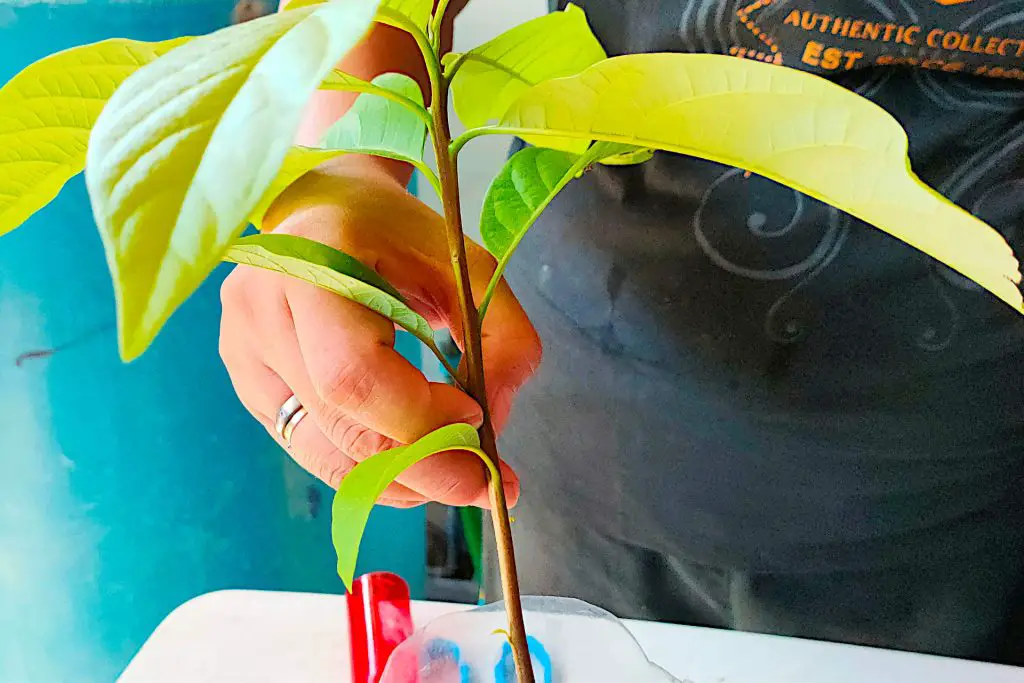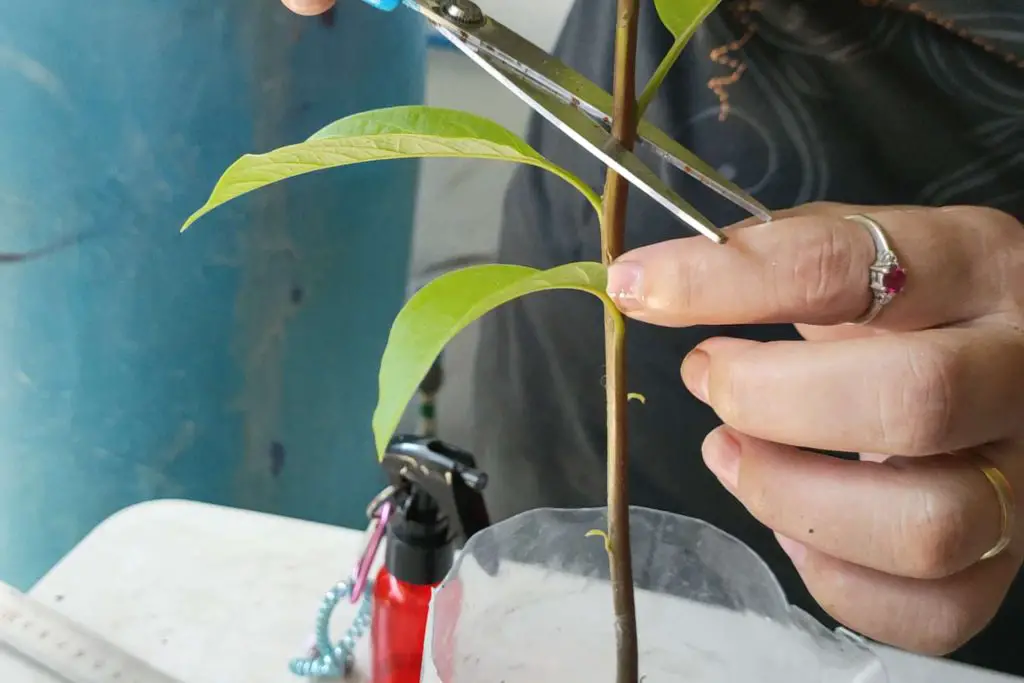Pinching Plants – Controlling and Improving the Growth of Your Plants
Plant pinching is one of those things that sounds like something out of a strange, distant past but, is actually an incredibly powerful technique that allows you to shape a plant’s growth. In essence, it is a form of pruning that is used to control the growth and shape of a plant. It is a fairly simple process that doesn’t require much if any, equipment.
The term comes from the physical action of ‘pinching’ with the tips of your fingers to remove new growth at the tip of a stem. It is usually done to prevent a plant from becoming too tall, whilst generating a fuller bushier shape.
Pinch pruning is a simple gardening technique that’s used to shape plants. It works by regulating the flow of hormone auxin to the various shoot tips causing or preventing the plant from growing lateral shoots.
What Is Plant Pinching and Why is it Done?

Plant pinching is a gardening technique that’s used to shape and growth of plants. There are three main types of pinchings:
- -cutting off lateral buds
- -controlling growth
- -preventing growth
Cutting off lateral buds is done to encourage the plant to grow only vertical branches. This type of pruning is often called “bushy” pruning.
Controlling growth is done to stop the plant from growing too tall. This type of prune is often referred to as “compact” pruning.
Preventing growth is done to stop a plant from growing too wide. This type of pinch pruning is often called “lateral shoot control” or “thinning”.
How Does Pinch Pruning Work
To understand why plant pinching works, we first need to know how plants grow.
As a plant develops, its roots fan out through the soil. These roots absorb nutrients and water and produce leaves that capture sunlight. Leaves turn green producing food for the plant.
The growth of the plant is supported by the hormone auxin, “… all the shoot tips on a plant compete with each other, so that tips both above and below can influence each other’s growth. This allows the strongest branches to grow the most vigorously, wherever they may be on the plant. The main shoot dominates mostly because it was there first, rather than because of its position at the apex of the plant.”[1]
Eventually, as it reaches a certain height the plant stops growing vertically and starts branching out horizontally and this horizontal growth is called lateral growth. Lateral growth allows the plant to reach higher and wider.
As hormones determine how fast the plant grows and branches out, controlling these hormones allows us to control aspects of the plant’s growth pattern. For instance, if the hormone levels are high, the plant will branch out quickly. On the other hand, if the hormone levels aren’t high enough, the plant will stop growing laterally.
In order to increase the number of hormones in the plant, you can pinch off parts of the plant. By doing this, you create a small wound in the plant. When the plant heals over, it produces more hormones. This means that the plant will continue to grow vertically or laterally until it reaches the desired size and shape.
The pinching off has the effect of increasing the amount of hormone in your plant but it also helps to increase the air circulation around the areas that have been pinched and provide better access to light. All these benefits serve to help plant growth become faster, and create bushier plants that grow in the desired direction.
Pinching Technique and Knowing Where to Pinch.

Pinching a plant is a simple process and it can be done with just your fingers or scissors, but usually, you don’t need pruning shears.
The basic process is very simple. It involves moving down the stem of the plant, generally to a node just above a leaf, and cutting, ‘pinching off’, the stem. Once pinched the plant will produce more branches at this point just generating lateral growth.
But how low on the stem should you pinch, and how often? It depends on several factors but mainly on how many feet or inches tall you want the plant to be and how bushy you would like the plant. Pinching at a node (the point where leaves are attached to the stem) delays flowering and encourages lateral growth or side shoots.
The more you pinch, the more lateral shoots will develop, and each of these lateral shoots will usually produce flower buds, although if you pinch a large number of stems the individual flowers are likely to be smaller.
As with most gardening tasks, the key to success is to experiment and see what works best in your particular situation. There is no right or wrong way to pinch; it all depends on the look you are going for and the type of plant you are working with.
When to Pinch Plants
In that generally, you are pinching young tender stems most pinching is likely to be carried out early in the growing season. The disadvantage of the process is that it will delay the plant blooming as it redirects its energies into growing new branches.
If you want larger flowers, remove fewer side shoots and laterals as early in the season as possible. This will allow the plant to put all its energy into producing fewer, but larger flowers.
The fact that flowering is delayed with pinching in early spring will, in turn, affect insect activity and if you are looking for pollination and seeds it is best to delay pinching to the fall.
Staggered Blooming To Turning Trees Into House Plants
There are several other benefits to pinching that make it one of the most useful techniques to master. One of these is that it allows you to stagger the bloom time of flowers in your beds, which has the effect of extending the flowering time of your beds. You do this by selective timing of your pinching. You can pinch some of the plants earlier than others causing them to bloom at different intervals.
Another advantage is that pinching and pruning allow you to be able to grow plants that you would probably never consider indoors. For example, growing an avocado tree indoors. Generally, in an outdoor setting, these trees can reach 80ft or more in height. However, with the correct pinching and pruning, you can keep them down to below 8ft and control the lateral growth to turn them into the perfect house plant.
The same can be applied to many other plants and trees that you have probably never considered growing indoors before.
Plants You Shouldn’t Pinch
There are, of course, some plants that don’t take well to pinching. Plants such as orchids, bromeliads, Hydrangea, irises, various succulents, and cacti amongst others. As a rule of thumb if a plant produces only one flower don’t pinch it as another flower may not grow.
Summary: Pinching Plants
As we have seen pinching plants is a straightforward gardening method used for shaping. Pinching allows the hormone auxin to be controlled causing the plant to either stimulate or inhibit the growth of lateral shoots, depending on the situation.
You don’t need any special equipment with your fingers often good enough. Besides helping shape and control growth to encourage bushy plants you can also, with strategic pinching, prolong the flowering of your beds through well into fall. In addition, it allows you to turn plants that you probably never previously considered into house plants.
Notes:
- University of York: Explaining Why Pruning Encourages Plants to Thrive
